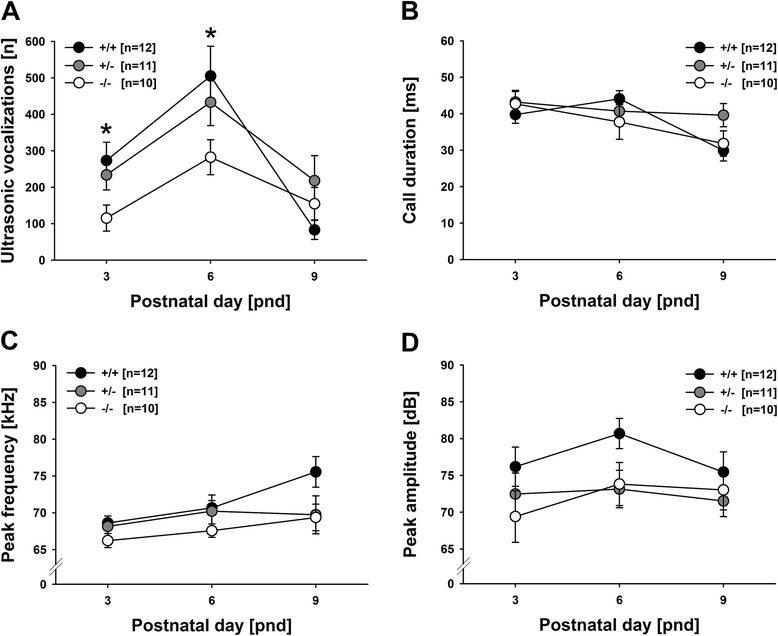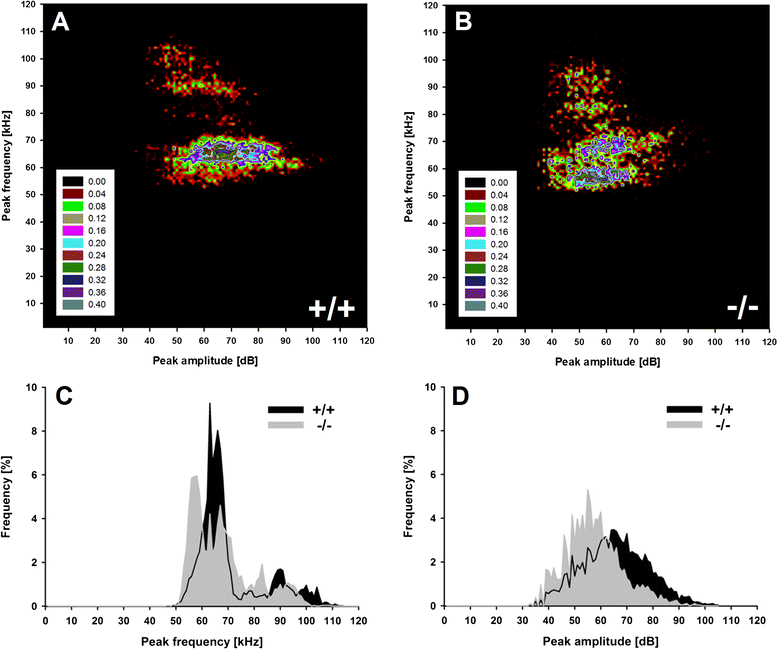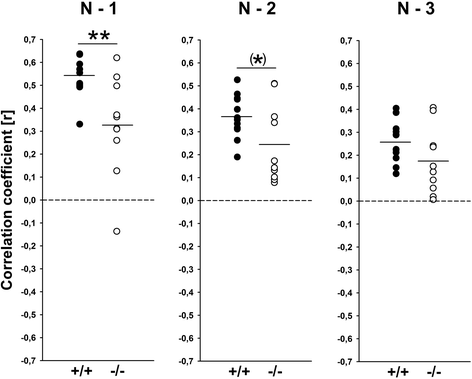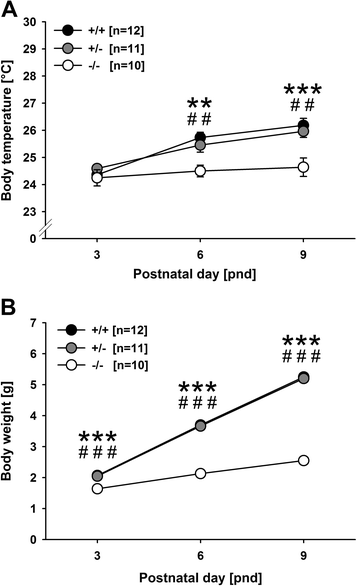Reduced isolation-induced pup ultrasonic communication in mouse pups lacking brain serotonin
- PMID: 25901271
- PMCID: PMC4404606
- DOI: 10.1186/s13229-015-0003-6
Reduced isolation-induced pup ultrasonic communication in mouse pups lacking brain serotonin
Abstract
Background: Serotonin (5-hydroxytryptamine, 5-HT) is a key modulatory neurotransmitter in the mammalian central nervous system (CNS) that plays an important role as a developmental signal. Several lines of evidence associate altered 5-HT signaling with psychopathology in humans, particularly neurodevelopmental disorders such as autism spectrum disorders (ASD). ASD are characterized by persistent social and communication deficits along with stereotyped and repetitive patterns of behavior, with all symptoms emerging early during development.
Methods: Here, we employed a mouse model devoid of brain 5-HT due to the lack of the gene encoding tryptophan hydroxylase 2 (Tph2), the initial and rate-limiting enzyme of 5-HT synthesis in the CNS. Tph2 null mutant (Tph2 (-/-) ) mice show normal prenatal development; however, they display for yet unknown reasons severe growth retardation during the first postnatal weeks. We investigated, therefore, whether Tph2 (-/-) mice display deficits in isolation-induced ultrasonic vocalizations (USV) as pups during early life. Isolation-induced USV are the most commonly studied behavioral measure to assess developmental delays and communication deficits in rodent models for ASD, particularly as they serve an important communicative function in coordinating mother-pup interactions.
Results: Tph2 (-/-) mouse pups displayed a clear deficit in the emission of isolation-induced USV, as compared to heterozygous and wildtype littermates, exactly during growth retardation onset, including reduced call numbers and deficits in call clustering and temporal organization.
Conclusions: The ultrasonic communication impairment displayed by Tph2 (-/-) mouse pups is likely to result in a deficient mother-infant interaction, presumably contributing to their growth retardation phenotype, and represents a prominent feature relevant to ASD.
Keywords: Animal models; Autism; Communication; Neurodevelopmental disorders; Serotonin; Ultrasonic vocalizations.
Figures




References
-
- Descarries L, Riad M, Parent M. Ultrastructure of the serotonin innervation in the mammalian nervous system. In: Müller CP, Jacobs BL, editors. Handbook of the behavioral neurobiology of serotonin. Amsterdam: Academic Press; 2010. pp. 65–101.
-
- Whitaker-Azmitia PM. Serotonin and development. In: Müller CP, Jacobs BL, editors. Handbook of the behavioral neurobiology of serotonin. Amsterdam: Academic Press; 2010. pp. 309–23.
-
- Hohmann CF, Blue ME. The role of serotonin in cortical development: implications for autism spectrum disorders. In: Müller CP, Jacobs BL, editors. Handbook of the behavioral neurobiology of serotonin. Amsterdam: Academic Press; 2010. pp. 637–65.
-
- Diagnostic and Statistical Manual of Mental Disorders, 5th edn. American Psychiatric Publishing, Arlington, VA, USA; 2013
LinkOut - more resources
Full Text Sources
Other Literature Sources
Miscellaneous

